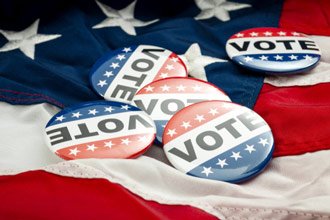The presidential election cycle can sometimes uncover predictable trends in the stock market. And this is profit potential for investors looking for new options trading patterns.
The average first year of a presidency typically sees the stock market gain. Hope and promises from the new chief executive keep prices buoyant. But then in the second year, tougher policies, including potentially higher taxes, take the optimism out of markets. And that puts a little pressure on prices.

President Trump's first two years were clearly exceptions, and the market went practically straight up. But following the mid-term elections, the stock market had a very choppy 2018, which included an actual market correction, classified as a 20% or more price decline.
But in the third year of an administration, policies designed to keep the current party in power come to light, via a "goosed" economy, and stocks generally do rather well. Last year certainly was one for the record books - the Dow added over 21% in 2019.
Now, in the fourth year, as the Iowa caucuses just kicked off the primary season, the worry of potential changes in policy surface. Stocks typically have a good, not great year.
Money Morning's options trading specialist, Tom Gentile, thinks this will be a somewhat abnormal presidential cycle.
Typically, election years are bullish. But according to Tom, the uniquely tense political climate could result in a "seesaw effect" later in the year. That means the trend will be more uncertain than normal.
Good news: There's an options play for that. It's called a "spread." If you already know how to execute one of these, Tom has more specific options plays you can use further down...
The Options Trading Pattern for the Election
Last year, we might have said that a simple call-buying strategy would be the best and most cost-effective plan. After all, we would have been confident in the market's trend.
But this year, we are less confident, thanks to the Tom's research. Therefore, a simple options spread trade fits the bill. It allows us to participate in the upside but limits the downside. And it costs less, too.
Don't let the name scare you. A spread trade is just buying one option and selling a related option. The money you collect for the sale of the second option partially offsets the cost of the option you buy. And the net result is that you are in the market with less risk.
Here's an example of what you'll do, given the somewhat bullish history of the last year of a presidential term.
How to Create an Options Spread
[mmpazkzone name="in-story" network="9794" site="307044" id="137008" type="4"]
If options spreads are new to you, don't worry. The steps are more simple than you might think.
First, you will buy a call option with a strike price just below the price of the stock on which the option is based. If your stock currently trades at $60 per share, you might buy a call option with a $55 strike price. For kicks, let's say it will cost you $2 per option.
Next, you sell an option on the same stock with the same expiration date but with a strike price just above the stock's current price. In this case, it could be the $65 strike. Let's say that option is priced at $1.
Your net cost is $2 − $1 = $1. You see, it is half what buying a single option would cost.
The most you can lose on this trade is the net cost of $1. But, of course, there is no free lunch. In order to limit your risk, you give up some of your potential upside. The most you can make is the difference between the strike prices minus the price you paid.
That would be $65 − $55 − $1 = $9.
But think about this. You put up a buck to make nine. That is a pretty good risk/reward ratio.
The next question is which stock you should play and when. Tom Gentile's services include the Money Calendar, which can estimate the behavior of certain stocks on a specific date by looking at past years...
You Can Collect Four Separate Paydays in Under a Minute with This Options Trading Secret
Live on camera, America's No. 1 Pattern Trader is showing you the secret behind some of his biggest trades to date.
Watch as he uses this special tool to collect four separate paydays in under a minute - all from enormous companies like Netflix, Apple, Facebook, even Amazon.
While it may have taken Tom years to invent this moneymaking "machine," it's super easy to understand and utilize.
All it takes is a few simple mouse clicks, and you could be hundreds, even thousands, richer.
This is an opportunity you won't want to miss out on.


